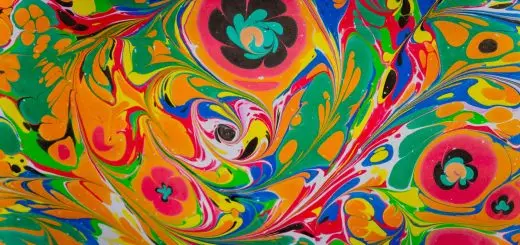Yin and Yang Symbol: Significance in Taoism

Looking for more amazing products? Check out our online store and explore our collection here! Happy shopping!
Before diving in, please note: This post is for informational purposes only. If you’d like to know more about how we approach topics, feel free to check out our friendly Disclaimer Page.
Hey there, amazing readers! 
We’re committed to delivering quality posts, and your support (even just sticking around despite the ads) means everything to us. So, bear with us, and thanks for helping us keep the good vibes rolling. Now, on to the fun stuff!
TRANSLATE BUTTON AT THE END OF THE ARTICLE
A Quick Overview: Introduction to Yin and Yang Symbol
The Yin and Yang symbol is one of the most recognizable and enduring symbols in Taoism, representing the fundamental concept of balance and harmony in the universe.
The symbol consists of a circle divided into two equal parts by a curved line, with one side dark (Yin) and the other light (Yang).
This ancient symbol encapsulates the dual nature of existence, where opposing forces are interconnected and interdependent.
Origins of the Yin and Yang Symbol
The concept of Yin and Yang dates back to ancient Chinese philosophy, particularly in Taoism.
It is believed that the symbol originated from the I Ching (Book of Changes), an ancient divination text that predates Taoism.
The symbol represents the dynamic interplay of opposite forces in the universe, such as light and dark, hot and cold, and male and female.
The idea is that these forces are not static but in a constant state of flux and transformation.
Meaning of Yin and Yang in Taoism
In Taoism, Yin and Yang are seen as complementary forces that are interconnected and interdependent.
Yin represents the passive, dark, and feminine aspects of nature, while Yang represents the active, light, and masculine aspects.
The balance between Yin and Yang is essential for achieving harmony and equilibrium in all aspects of life.
Taoists believe that everything in the universe, including humans, is a manifestation of Yin and Yang.
Balance and Harmony in Yin and Yang
The concept of balance and harmony is central to the symbolism of Yin and Yang.
Taoists believe that when Yin and Yang are in balance, there is harmony and peace in the universe.
Imbalances between these forces can lead to disharmony, chaos, and disease.
By understanding and embracing the interplay of Yin and Yang, individuals can strive to achieve balance in their lives and cultivate inner peace.
Interconnectedness of Yin and Yang
Yin and Yang are not seen as separate or opposing forces but as interconnected and interdependent aspects of a whole.
They are constantly in a state of dynamic equilibrium, with each force containing the seed of its opposite.
This interconnectedness highlights the cyclical nature of existence, where one force transforms into the other in a never-ending cycle of creation and destruction.
Representations of Yin and Yang
The Yin and Yang symbol is often depicted in various forms of art, such as paintings, sculptures, and tattoos.
It can also be found in architecture, clothing, and even in everyday objects.
The symbol is a visual representation of the duality and interconnectedness of all things in the universe.
It serves as a reminder of the balance that must be maintained in order to achieve harmony and peace.
Application of Yin and Yang in Taoist practices
Taoist practices, such as Qi Gong, Tai Chi, and meditation, often incorporate the principles of Yin and Yang.
These practices aim to cultivate balance and harmony in the body, mind, and spirit.
By harnessing the energy of Yin and Yang, practitioners can achieve a state of inner peace, vitality, and well-being.
Taoist rituals and ceremonies also emphasize the importance of maintaining balance in all aspects of life.
Yin and Yang in Traditional Chinese Medicine
In Traditional Chinese Medicine (TCM), the concept of Yin and Yang is used to diagnose and treat illness.
Practitioners believe that imbalances between Yin and Yang can lead to disease and discomfort.
By restoring harmony between these forces through acupuncture, herbal medicine, and other therapies, TCM aims to promote healing and wellness.
The holistic approach of TCM emphasizes the interconnectedness of the body, mind, and spirit.
Yin and Yang in Feng Shui
In Feng Shui, the ancient Chinese art of arranging spaces harmoniously, the principles of Yin and Yang are used to create balanced and harmonious environments.
By incorporating elements of Yin (such as water, curved lines, and dark colors) and Yang (such as fire, angular shapes, and bright colors) into a space, practitioners believe they can enhance the flow of energy (Qi) and promote health, prosperity, and well-being.
Yin and Yang in Martial Arts
Martial arts, such as Kung Fu and Tai Chi, also incorporate the principles of Yin and Yang in their practice.
Movements in these arts often reflect the interplay of opposing forces, such as softness and hardness, yielding and striking.
By integrating the concepts of Yin and Yang into their training, martial artists aim to achieve balance, agility, and strength.
The harmonious flow of energy in martial arts is believed to enhance overall health and vitality.
Modern Interpretations of Yin and Yang
In modern times, the concept of Yin and Yang has transcended its Taoist roots and has been embraced by people around the world as a symbol of balance and harmony.
From psychology to business, the principles of Yin and Yang are applied in various contexts to promote well-being, productivity, and success.
The symbol has become a universal representation of the interconnectedness and interdependence of all things in the universe.
Conclusion: Importance of Yin and Yang in Taoism
The Yin and Yang symbol holds profound significance in Taoism, representing the dynamic interplay of opposite forces in the universe.
Through the balance and harmony of Yin and Yang, Taoists seek to cultivate inner peace, vitality, and well-being.
The interconnectedness of Yin and Yang serves as a reminder of the cyclical nature of existence and the need to embrace both light and dark, active and passive, in order to achieve equilibrium.
By understanding and applying the principles of Yin and Yang in their lives, individuals can strive for balance, harmony, and a deeper connection to the natural world.

The Enlightenment Journey is a remarkable collection of writings authored by a distinguished group of experts in the fields of spirituality, new age, and esoteric knowledge.
This anthology features a diverse assembly of well-experienced authors who bring their profound insights and credible perspectives to the forefront.
Each contributor possesses a wealth of knowledge and wisdom, making them authorities in their respective domains.
Together, they offer readers a transformative journey into the realms of spiritual growth, self-discovery, and esoteric enlightenment.
The Enlightenment Journey is a testament to the collective expertise of these luminaries, providing readers with a rich tapestry of ideas and information to illuminate their spiritual path.
Our Diverse Expertise
While our primary focus is on spirituality and esotericism, we are equally passionate about exploring a wide range of other topics and niches 

To ensure we provide the most accurate and valuable insights, we collaborate with trusted experts in their respective domains 
Our blog originally focused on spirituality and metaphysics, but we’ve since expanded to cover a wide range of niches. Don’t worry—we continue to publish a lot of articles on spirituality! Frequently visit our blog to explore our diverse content and stay tuned for more insightful reads.
Hey there, amazing reader! 
Check out our store here and take a peek at some of our featured products below! Thanks for being awesome!











